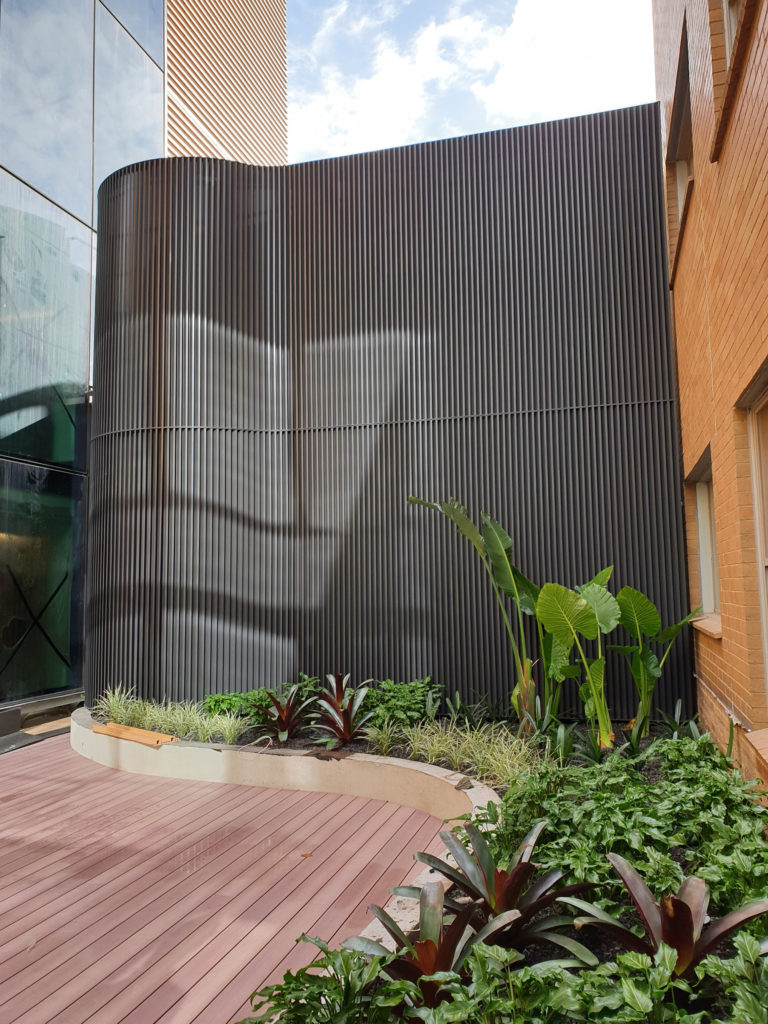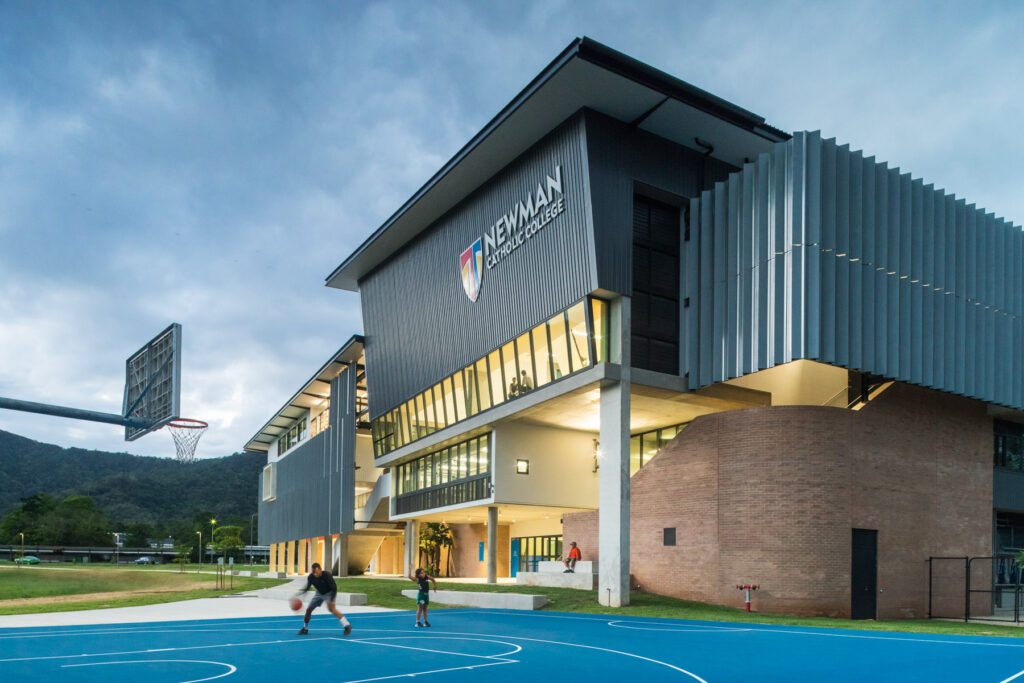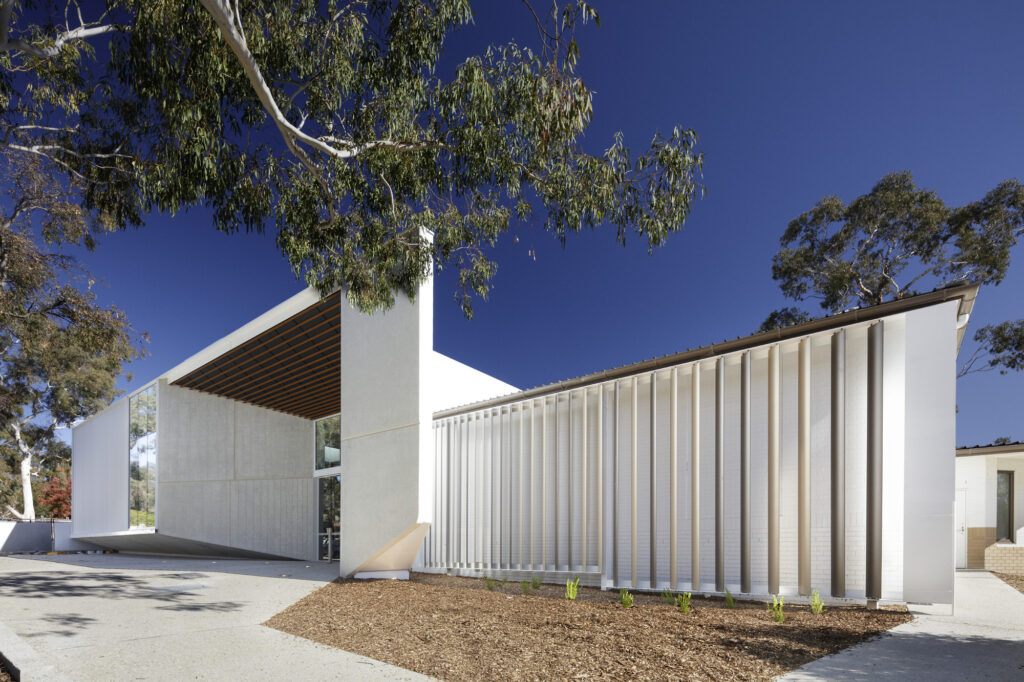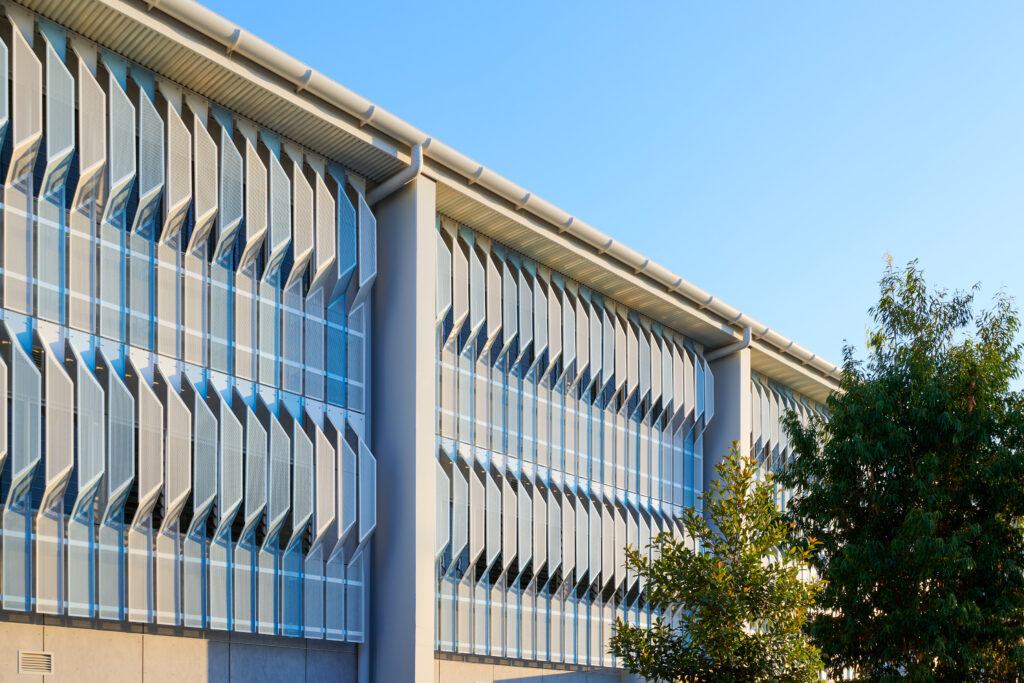Introduction
All commercial and industrial buildings require louvres, to allow the building to breath and prevent rain from getting in or sometimes, simply as zero vision screening. However, there is often insufficient consideration given to exactly what the system is required to achieve. This is particularly common when it comes to “Performance Louvres” and the need to exclude wind driven rain.
Ultimately, everyone wants 100% rain defence and 100% air flow. However, this is not always achievable and there is always a compromise between these two performance factors.
In Australia AS/NZS 4740:2000 sets out the test method and standard required for testing natural ventilators.
When specifying a louvre the information following must be carefully considered.
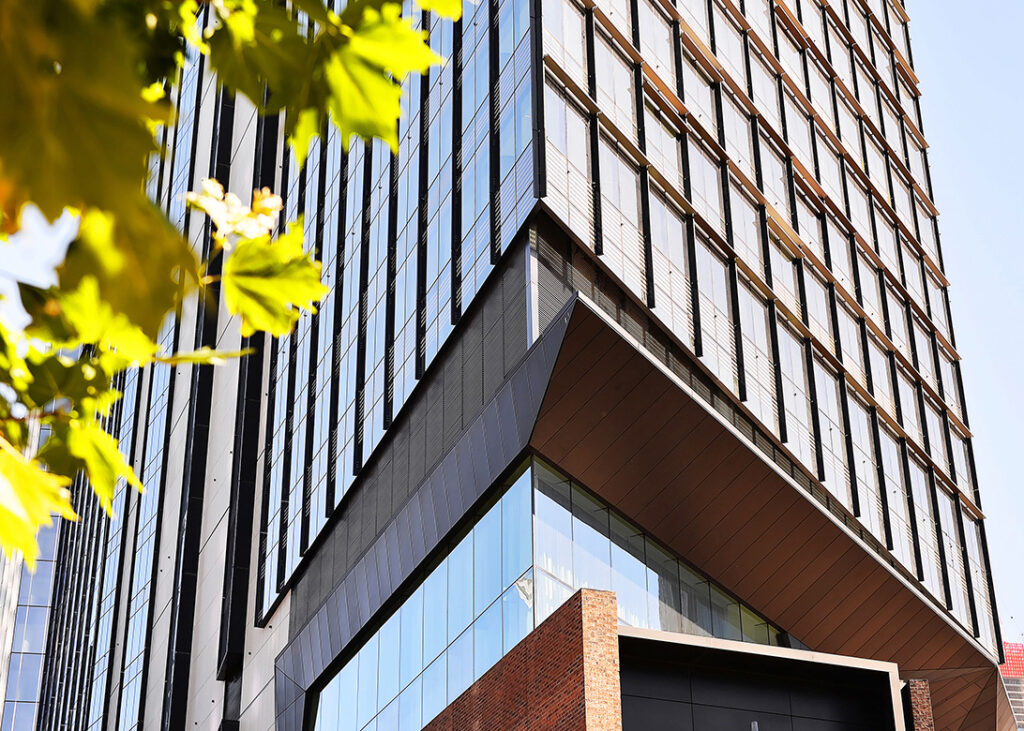
Part 1: Louvre’s Rain Resistance Effectiveness (or Penetration Class)
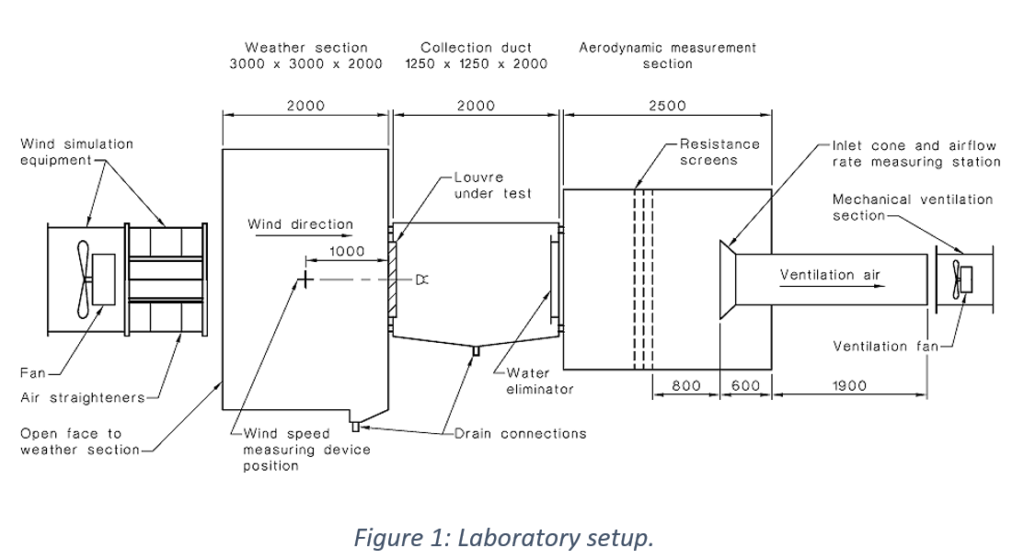
Figure B1 – Aerodynamic Weather Louvre Test Facility
Figure B1 is a typical lab setup used to test the rain resistance of a weather louvre. The rain resistance of a louvre can be classified into 4 levels. These classifications are an indication of the rain resistance effectiveness of the weather louvre against water (rain) penetration. Each class covers a specific range, and it can be seen from the table below that Class A is the highest rating achieving up to 99% effectiveness, which is significantly more effective than Class B below it.

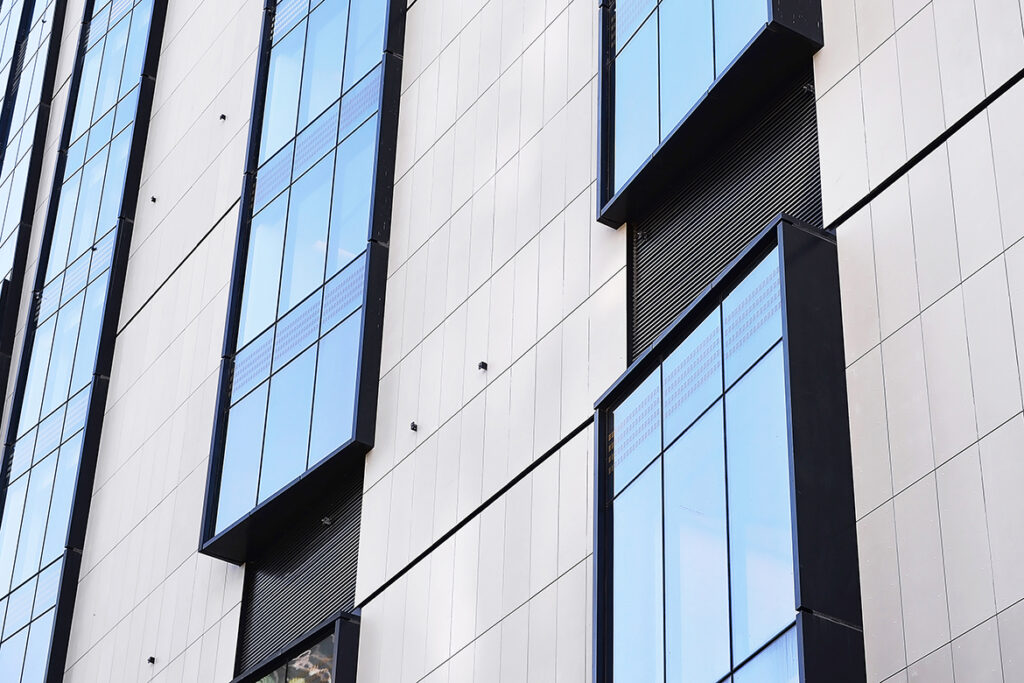
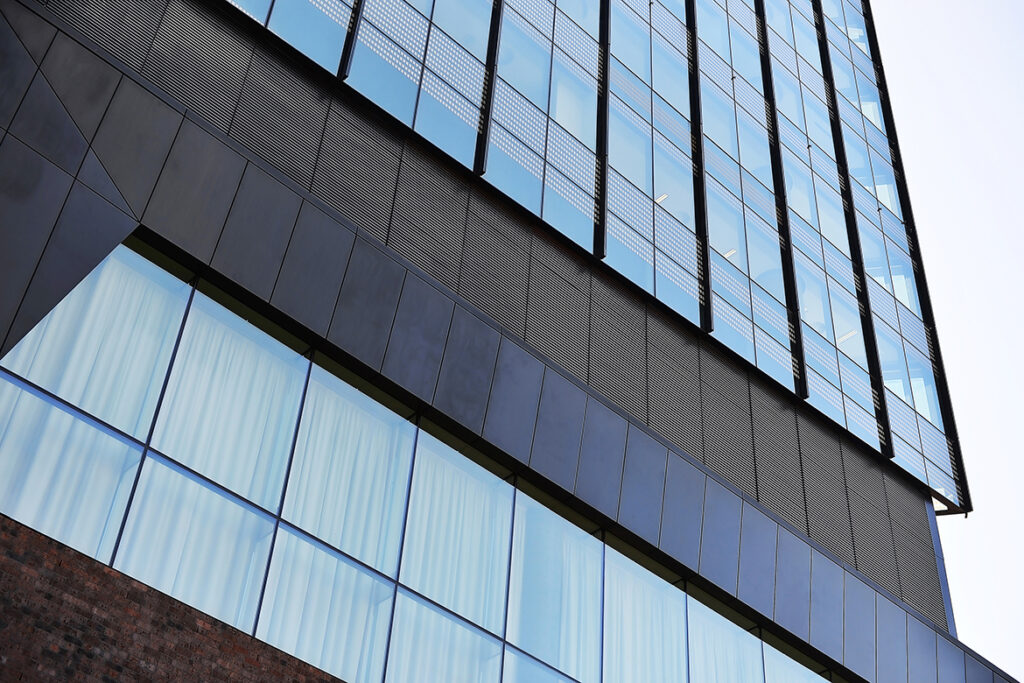
Part 1: Louvre’s Rain Resistance Effectiveness (or Penetration Class)
The effective aerodynamic area classification rates the louvres ability to allow air to pass through it and is determined by establishing the Discharge Loss Coefficient (DLC) at various airflow velocities. Each class covers a specific range, as shown in Table 2. The higher the DLC the less resistant to air the louvre is, with a DLC of 1 being ideal. In simple terms, a hole in the wall with no louvre would have a DLC of 0.7 or above depending on the size of the hole.
This effective aerodynamic area classification provides a guide for mechanical consultants and building designers on how a louvre is performing at various ventilation rates, while the DLC is an indication of the range within each classification.

Please note that although the test method used in the British Standard BS EN 13030 is the same, the parameters of the classification system are rather different when it comes to the aerodynamics as shown in Table 3.
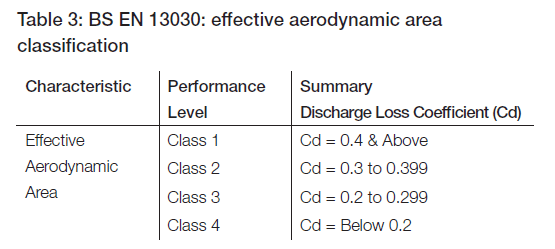
As you can see, what may be a Class 1 according to BS EN 13030 would be Class 3 according to AS/NZS 4740:2000. Therefore, it is advised you check which standard the louvre has been tested to in order to fully understand the louvres performance.
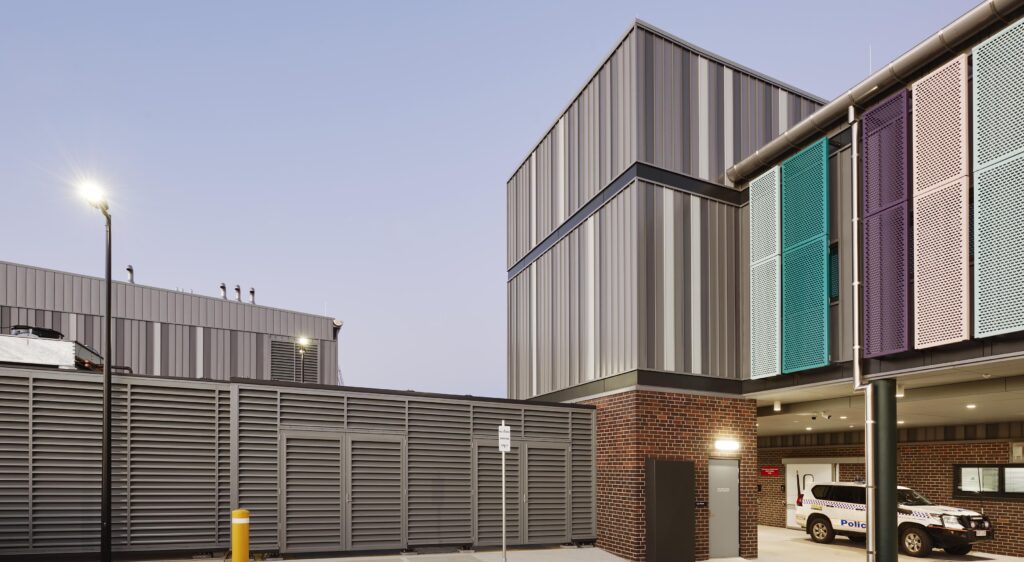
All Commercial and industrial buildings require louvres, to allow the building to breath and prevent rain from getting in or sometimes, simply as zero vision screening.
Measuring ‘Percentage Free Open Area’
Percentage free open area is a ratio scale and according to AMCA, ADB and ‘Industry Standard’ each of these ‘standards’ measure free open area differently so how do we know which is correct and is it even relevant to louvre performance? Figure B2 shows an example of percentage free open area using the different standards. Percentage free open area is not used in AS4740:2000 to measure louvre’s performance.

Figure B2: Comparison of free open area using different measurement methods.
Adding to the confusion, is the fact that there are varying terms and test data published by louvre manufacturers when describing louvre performance.
Free area velocity, throat velocity and face velocity are a few of the many, making it unclear and difficult to compare like for like. According to AS4740:2000, the louvre’s performance can be tabulated base on its face velocities, which is the air velocities at the frontal area of the louvre panel. The rain resistance performance can be tabulated based on its core velocities. The core area is the total area where the louvre blades occupied. It does not include the framing of the louvre panel, which is smaller than the frontal area.
Without being a louvre expert, how do we ensure that what is calculated is accurate and beneficial to us when selecting the correct louvre?
No matter which of these methods you choose to use, percentage free open area does not take into consideration any specific air flow rate or pressure drop (Pa) unique to that louvre profile, nor does it consider the weather performance characteristics of the louvre. On this basis we can easily conclude that Percentage Free Open Area is not the most accurate way to measure louvre performance.
In order to accurately compare like with like, a louvre must be tested and rated to the Australian standard, AS/NZS 4740:2000.
We can now prove that the Percentage Free Open Area of a louvre is not the most accurate way to measure louvre performance.
To ensure you specify the right performance louvre for your project, you can use
the following process:
1. Confirm that the louvre is tested to AS/NZS 4740:2000.
2. Mechanical engineer defines the required Volume Flow Rate (m3/s) for mechanical plant or passive ventilation.
3. Mechanical engineer defines the maximum allowable pressure drop (Pa) across a louvre before fan performance suffers.
4. The architect and engineer balance the louvre façade area (m2) against the effective aerodynamic area of any louvre selections and the required rain resistance rating, to get a mutually workable outcome.
5. Specify the louvre that works for your design aesthetically while also achieving the performance classification required for both aerodynamics and rain defence performance.
For example: Jupiter Series 2 Stage Louvre – Class A3 (Example schedule available on draft specification)
